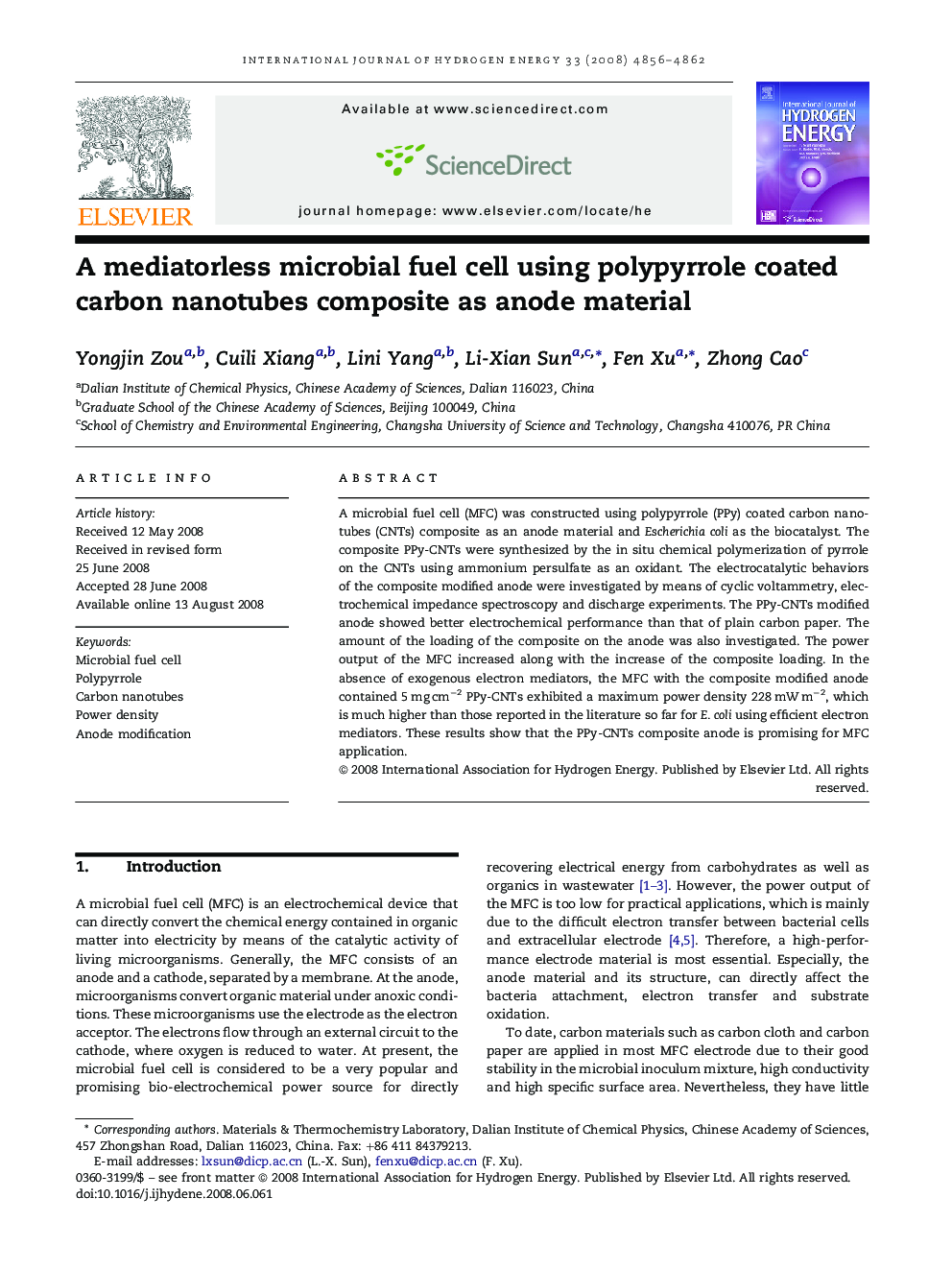| Article ID | Journal | Published Year | Pages | File Type |
|---|---|---|---|---|
| 1279228 | International Journal of Hydrogen Energy | 2008 | 7 Pages |
A microbial fuel cell (MFC) was constructed using polypyrrole (PPy) coated carbon nanotubes (CNTs) composite as an anode material and Escherichia coli as the biocatalyst. The composite PPy-CNTs were synthesized by the in situ chemical polymerization of pyrrole on the CNTs using ammonium persulfate as an oxidant. The electrocatalytic behaviors of the composite modified anode were investigated by means of cyclic voltammetry, electrochemical impedance spectroscopy and discharge experiments. The PPy-CNTs modified anode showed better electrochemical performance than that of plain carbon paper. The amount of the loading of the composite on the anode was also investigated. The power output of the MFC increased along with the increase of the composite loading. In the absence of exogenous electron mediators, the MFC with the composite modified anode contained 5 mg cm−2 PPy-CNTs exhibited a maximum power density 228 mW m−2, which is much higher than those reported in the literature so far for E. coli using efficient electron mediators. These results show that the PPy-CNTs composite anode is promising for MFC application.
